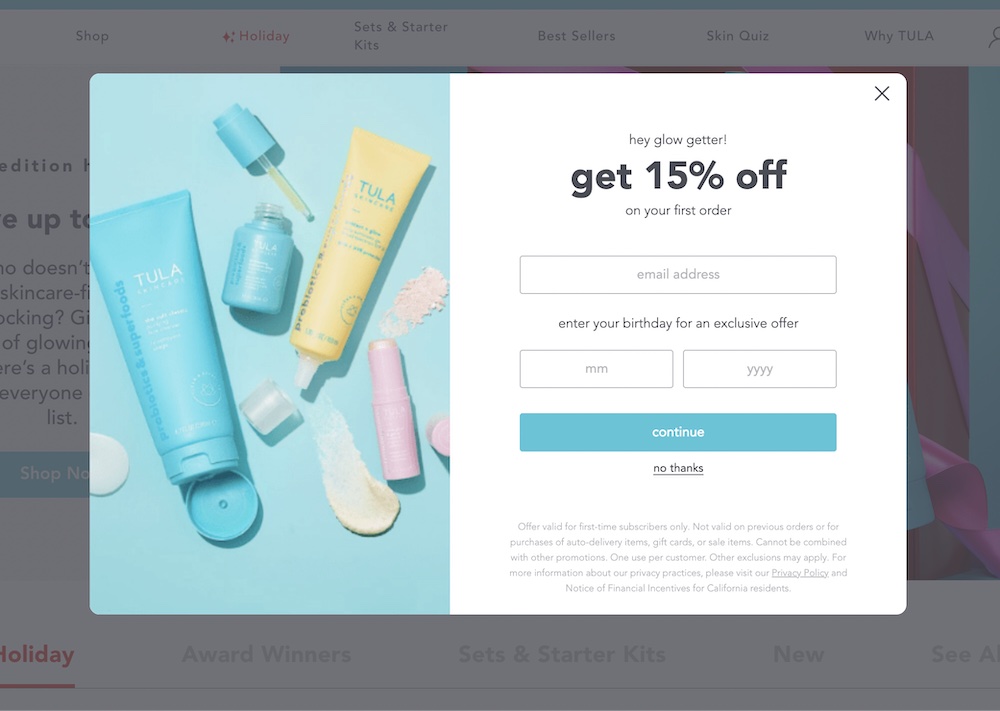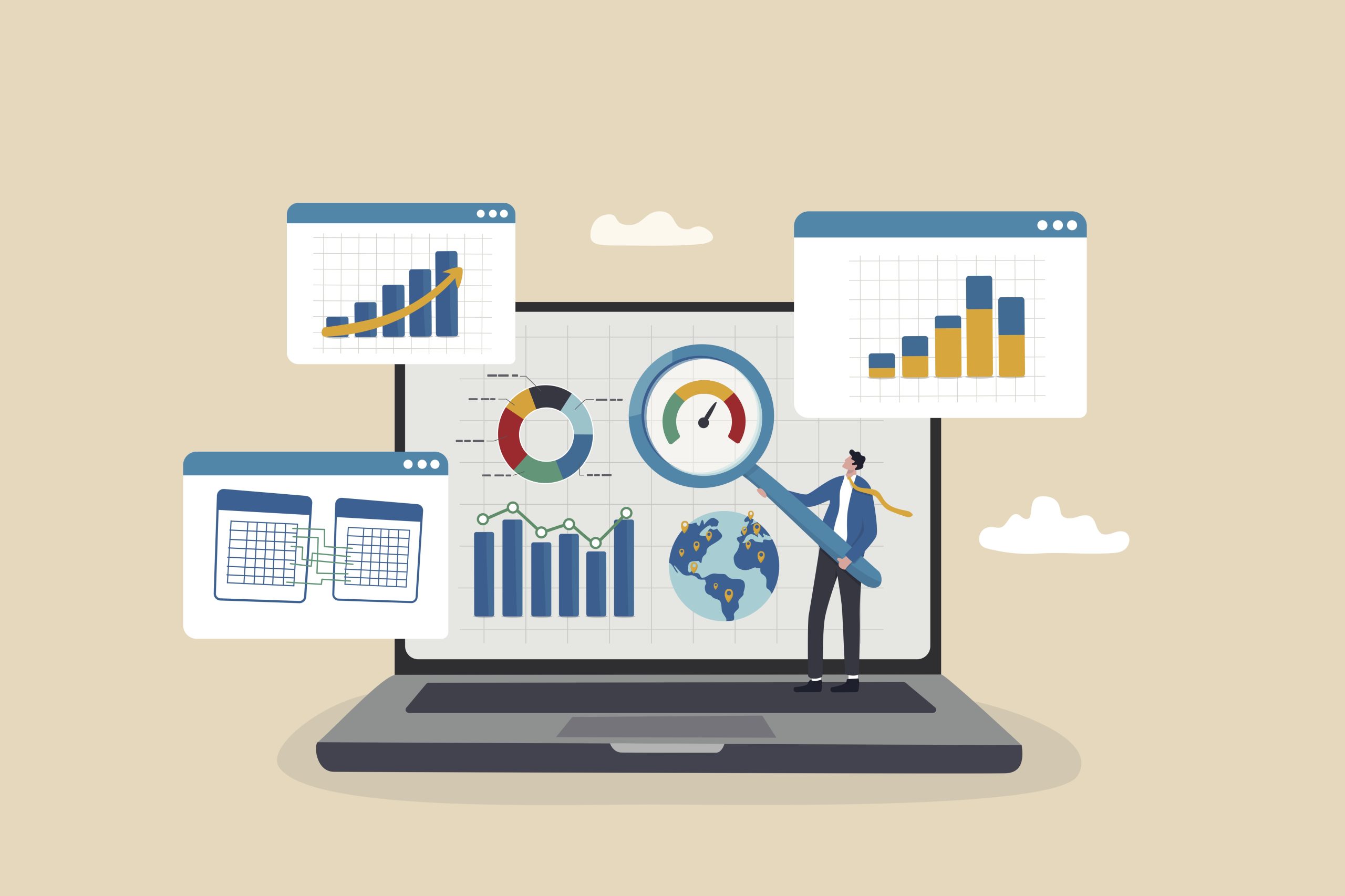
You offer a discount code, you may drive an easier sale. We all know this, which is why every consumer brand (rightfully) leverages discount codes as a tactic in their marketing strategy.
However, we’d like to take this a step further and think more about when you should offer discount codes so that you can be more strategic in your discounting strategy and do more than simply drive one-off purchases.
In this piece, we’ll highlight some specific reasons you should leverage discount codes (with some help from our friends at Junip and Klaviyo). Then, we’ll cover a topic that we don’t feel is talked about nearly enough: how to analyze your discount code data.
Part I: Discount Code Strategies to Try
Aside from discounted seasonal promotions and targeted marketing campaigns, we’ll discuss several other strategies that discount codes can improve.
Collecting zero-party data
Many brands use discount popups on their home pages to collect emails–you’ve seen them in your online shopping experiences, and you may use them on your own eCommerce site. The customer lands on the site, and one action or another triggers the tried-and-true “Sign up for our email list and get 10% off” popup.
While this is a great baseline tactic, we’d recommend taking your pop-up strategy to the next level by building discount popups that collect zero-party data in addition to emails. Brands absolutely must collect zero-party data in order to build more personalized experiences for customers and improve their retention strategies.
TULA, for instance, offers 15% a first order in exchange for the customer’s email address and birthday:

By collecting a customer’s birthday, TULA can send them an automated offer every year. The customer might get a kick out of a brand “remembering” their birthday, and otherwise, the possibilities are endless. Offers could be based on purchase history, the season (“a winter birthday, so here’s a product to deal with the cold”), and more.
Birthdays are a popular choice for zero-party data collection, but you can use discounts to compel customers to give you information that is relevant to your brand: favorite coffee roast, favorite color, inseam, and more.
Incentivizing Reviews and Repurchases
Reviews are a proven way to increase revenue: the more people have reviewed a product, the more likely potential buyers will in fact buy the product. As Stuart, the CEO of review tool Junip, advises:
“Offering discount codes can be a great way to incentivize customers to leave reviews, photos & videos. Even more importantly though, discount codes help turn reviewers into repeat customers, converting the delight they had with their previous purchase.
It’s important to ensure the discount codes you’re offering are single use, unique & apply to all potential purchases, including subscriptions.”
Additionally, by increasing repurchase rate via discounts, you’ll also increase your customer lifetime value and add to your number of high-value customers.
“Nudging” Customers to Purchase
We’ll leave this to Alex McPeak, Content Marketing Manager at Klaviyo:
“Discount codes are a great way to incentivize customers that might not yet be ready to make a purchase, but it’s important to employ a smart discounting strategy through segmentation in order to ensure you’re not impacting your margins where you don’t have to.
A great way to think about offering a discount code is as a follow up—or even a last ditch effort—if someone hasn’t purchased after a first or second email or SMS communication. For example, you might have an abandoned cart series that encourages shoppers to give another look at the product in their cart and complete their purchase.
This nudge might be enough to get most window shoppers to buy. But if not, that’s when you could consider following up with another email or text message to shoppers who still haven’t bought after 48 hours of receiving the first email with an exclusive discount code for them to complete checkout.
Plenty of customers will buy without a promotional offer, so you don’t need to offer constant discounts to convert customers—and you also don’t want to train shoppers to expect discounts. But with a smart segmentation strategy, you can ensure you’re offering discounts at the right time.”
Part II: Analyzing Your Discount Code Data
At Daasity, we encounter many brands who regularly offer discount codes but who aren’t sure what they should be looking for when they’re analyzing their discount code data. In terms of discount code data, we’ll stick to talking about first-party data around purchase behavior.
Discount code (or No Discount Code?)
A simple high-level customer breakdown is to examine customers based on whether they have or have never used a discount.
For customers who have used a discount code: Simply put, they are more likely to use a discount in the future. Some customers are once-a-year purchasers who look for heavy BFCM discounts, others are general bargain hunters, and others (like many of us) simply won’t pass up a particularly compelling offer.
For these customers, you may continue to test whether they consistently convert on discounted offers.
Try this: Clear excess inventory by offering discounted surplus stock to these customers.
For customers who have never used a discount code: Customers who have never bought at a discount may be fundamentally less price sensitive than those who have. This may not always be true of course: with such an either-or look at data, this category will certainly include groups such as one-time purchasers who were simply trying a brand for the first time and didn’t use a discount.
However, in this “have never” category, there may also be wealthier customers who are never looking at price tags (or e-price tags) to begin with.
Try this: Offer these customers your more expensive products and evaluate how they convert. Is their CVR higher than your overall CVR for offers on these products?
LTV by Discount Code
A customer’s first interaction with a brand can have a large impact on their behavior over time. For instance, we have seen across the board that certain first products or SKUs purchased lead to higher LTV. Bra brand Harper Wilde, for example, noticed that customers who first purchased non-underwire bras had higher LTVs than those who ordered underwire bras.
In the context of discount codes, we recommend that you break down LTV by discount code to see whether certain discount codes presented with certain promotions impact LTV. The codes are like references to evaluate the efficacy of promotions.
What about the campaign that the code appeared in may have led to higher LTV? Lower LTV?
To get a clear idea of LTV by discount code (i.e., by promotion), you can visualize the data and track it over time:
Again, why might certain promotions have led to higher LTV? Dig into the data, analyze the promotions themselves, and you’ll be on your way.
Pro tip: Try stacking tactics when building marketing campaigns. For example:
- Take TULA’s approach and offer a birthday discount (that you collected via discount popup when they first landed on your site) AND
- Use information about a customer’s preferences (that you subsequently collected via survey) AND
- Use styling and other techniques that you learned from your most successful promotions
…and you just might launch your highest-converting emails ever.
Discount Code = Subscription?
A last way we’ll recommend analyzing your discount code data is in the context of subscriptions. In short: do discount codes lead to more customers starting subscriptions?
But there are more questions to investigate here. Do discount codes lead to customers remaining subscribers for longer? Will subsequent discounts keep purchasers for even longer?
We recommend testing out all of the above!
- Test whether you see a higher subscription opt-in rate among customers who received a discount code on their first subscription order.
- Test whether customers who received a discount code to start subscriptions remain subscribers for longer.
- Test whether an offer such as, “Get 15% off your first subscription order and another 15% your fifth order” compels customers to stay subscribed to and through their fifth renewal.
Final Discounted Thoughts
We hope that we (Daasity) and friends (Junip and Klaviyo) introduced some new ways to leverage discount codes and investigate your discount code data.
Daasity is a data and analytics platform built for omnichannel brands, and if there’s one thing we like more about data… Well, we haven’t found something we like talking about more than data.
To learn more about us, head to Daasity.com: we’d also love to show you a demo, if you’re interested in building a single source of truth around your data.





